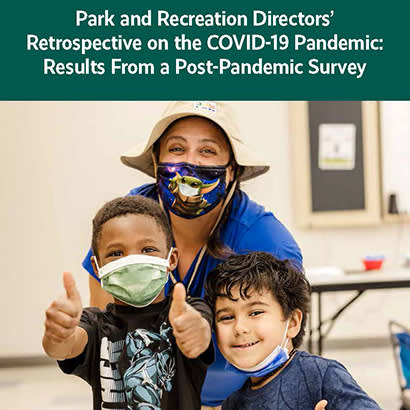
For an enhanced digital experience, read this story in the ezine.
The World Health Organization’s declaration that the novel coronavirus (COVID-19) outbreak was a global pandemic in March 2020 caused nothing short of a dramatic change in society. The pandemic had a tremendously detrimental impact on many people’s physical and mental health, led to significant economic instability, and highlighted challenges that our most vulnerable community members faced. The past few years also showed how parks and recreation is essential. Parks, trails and outdoor amenities offered respite from stress, and park and recreation agencies provided childcare to essential workers, served as distribution points for nutrition assistance, and made their facilities available for COVID-19 testing and vaccinations. But what are the lasting effects of the pandemic?
The NRPA Research team partnered with the following researchers to understand the pandemic’s legacy on parks and recreation:
Andrew J. Mowen, Ph.D.
The Pennsylvania State University
Sammie Powers, Ph.D.
George Mason University
Nick Pitas, Ph.D.
University of Illinois Urbana-Champaign
Alex Caraynoff, M.S.
The Pennsylvania State University
The team conducted a survey and reported on park and recreation leaders’ opinions on their agencies’ resiliency and innovation, budgetary and staffing impacts, how they communicated the local impacts to political leaders, and how agencies took on new responsibilities and formed partnerships.
Innovation
A large majority of park and recreation leaders agree that they and their peers were innovative during the pandemic; 76 percent rank their profession a 4 or 5 on a five-point scale. A mere 3 percent characterize the industry as not having been resilient at all during the pandemic. A smaller majority describe their own agencies as having been innovative in response to the pandemic. Sixty-two percent assigned a 4 or 5 on a five-point scale when rating how innovative their agency’s response was. Fewer than 1 in 10 indicate that their agencies were not innovative.
Park Visitation and Program Participation
Parks, trails and open spaces were among few recreational resources available early in the pandemic. As a result, 4 in 5 park and recreation leaders report that park visitation levels at the peak of the pandemic were higher than before the global health crisis. Sixty percent characterize park visitation levels as having “increased significantly” compared to pre-pandemic levels. The growth in park usage has proven to be durable; 80 percent of park and recreation professionals report that park visitation levels currently are higher than pre-pandemic levels. A third of park and recreation leaders indicate visitation levels have “increased significantly,” while 47 percent report that usage has increased “somewhat.”
Advocacy and Vocalness
Park and recreation leaders utilized many strategies when advocating to local officials for greater funding and investment. The most common strategy, used by 89 percent of survey respondents, focused on one-on-one conversations with public officials. Beyond these discussions, agency leaders invited local officials to tour their agencies’ facilities to see the impact of COVID-19 (73 percent). Agency leaders also drew upon the experiences of residents through storytelling (81 percent) and community member testimonies at public meetings (75 percent).
Conclusion
The way park and recreation professionals and agencies responded to the pandemic highlighted how their work is essential. However, most agencies still operate without the financial support needed to fully deliver on their mission.
Kevin Roth is Vice President of Research, Evaluation and Technology at NRPA.

